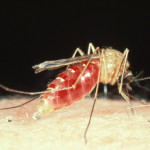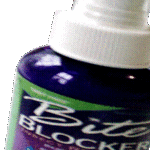Managing Food in the classroom and the pests that come with the food in these areas.
By Jennifer Snyder, Oregon State University, School IPM Program
Food in the classroom… It can bring joy to children’s faces, or elicit groans from teachers and custodians alike.
The United States is currently undergoing a food revolution in its schools. New federal laws seek to limit sugar, salt, and fat content in school meals and snacks, while increasing the amount of whole grains, vegetables, and fruits. Current and pending laws govern federally-funded breakfast, lunch, and snack programs, but do not apply to classroom treats brought in by students, parents, or teachers. As we all know, treats and snacks are common in many classrooms and are likely here to stay.
CLASSROOM FOOD AND PESTS…
While regulations and concerns over childhood nutrition are an evolving topic, there is one aspect about classroom food that has not changed: if you provide it, the pests will come. Classrooms with microwaves and refrigerators are especially prone to food debris and pest occurrence. In addition to a food source, these appliances provide a heat source and shelter for pests.
Primary pests like ants, flies, cockroaches, and mice are not picky; they’ll be drawn to half-chewed Halloween candy covered in dust, the long-forgotten crumbs under the microwave, a few bits of birthday cake ground into the rug, or juice residue left on desks and furniture by sticky-sweet faces and fingers. It takes very little food for pests to thrive and reproduce in the hidden spaces of a classroom. Some common pests, such as certain flies, can carry disease organisms and spread food-borne illnesses, including salmonella1. Urine and dander from the common house mouse are known allergens and triggers of asthma2. Secondary pests—such as spiders, and other predatory or scavenging organisms—may also invade a classroom
UNWANTED HOLIDAY GUESTS…
In addition to regular classroom meals, snacks, and birthday parties, classroom food during the fall and winter holidays can pose challenges to pest prevention. From October through December, it can be especially difficult for teachers to limit food in the classroom, or for custodial staff to keep up with classroom sanitation needs resulting from increased food during this time. Integrated pest management requires that all staff have a role in pest prevention and work together to achieve results. When it comes to managing classroom food, teachers and students may play the most important role of all.
FOR MORE INFORMATION
- Graczyk, T. K., R. Knight, R. H. Gilman, M. R. Cranfield. 2001. The role of non-biting flies in the epidemiology of human infectious diseases. Microbes and Infection 3(3): 231-235.
- Phipatanakul, W. 2002. Rodent Allergens. Current Allergy and Asthma Reports 2: 412-416.
- The National Pesticide Information Center (NPIC) provides objective, science-based information about pesticides and related topics to enable people to make informed decisions. To contact NPIC, call 1-800-858-7378 or visit http://npic.orst.edu
HELPFUL TIPS FOR MANAGING FOOD IN THE CLASSROOM
Careful food management in the classroom will help keep pest issues to a minimum.
TEACHERS & STUDENTS
- Manage free-range eating in the classroom by designating an easy-to-clean “snack area”. If the area is small, consider having students rotate playtime and snack time. The more consolidated food crumbs and residues are, the more thoroughly custodial staff can clean on a tight schedule.
- Encourage students to help clean up and tell you about spills immediately.
- Avoid foods that are difficult to clean up after (treats with frosting, muffins, etc.). Request that parents bring in snacks like granola bars, carrot sticks, grapes, or individually-packaged treats that generate fewer crumbs. Send leftovers home with students.
- Store your desk and cupboard foods in hard containers with snap-tight or screw-top lids. Boxes and plastic or foil bags are no barrier to a hungry mouse or insect.
- Consider removing the refrigerator or microwave from your classroom. Annual energy savings will benefit your district, and you’ll be eliminating one more home to a pest.
- Move stored materials off the floor (e.g., onto shelves, or tables along the wall, etc.). This opens up access to the wall base (where food debris and pests accumulate) so that custodial staff can clean more thoroughly.
- Clean up spills or notify custodians promptly. Make sure that any trash or recycling containing food debris is removed from the classroom every night.
CUSTODIANS
- Share this newsletter with teachers and administrators at your school. Remind staff that pests are after three things: food, water, shelter. Everyone has a role in managing these to prevent pests.
- At least once per month, vacuum along the wall base and behind freestanding furniture. Most pests follow walls, and eat debris that accumulates there.
- Empty classroom garbage as often as district policy allows. During the fall and winter holidays, this may require daily garbage service due to the surplus in classroom food.
- For pest issues that cannot be immediately addressed with sanitation, report them to your district IPM Coordinator or pest manager.
Texas A&M AgriLife Extension would also like to recognize, Dr. Tim Stock, Oregon State University Extension Service, School IPM Program and Ms. Carrie Foss, Washington State University Extension, Urban IPM Program, who helped to craft this article as a fact sheet for schools in WA and OR.
From Dusk to Dawn, Mosquitoes suck!
By: L.C Fudd Graham, Auburn University, Coordinator – Alabama Fire Ant Management Program/School IPM Program
Mosquitoes in urban settings can cause numerous health problems due to their ability to transfer, or vector, viruses and other disease-causing pathogens. With human cases expected to soar this summer, our best defense is knowledge of the virus and mosquito management.
West Nile Virus is a mosquito-borne virus contracted through mosquito bites. Only about 60% of people who have tested positive for the virus ever knew they were being bitten by mosquitoes, so it’s advisable to just assume they are out and about between dusk and dawn.
People of all ages (including children) can contract the virus. About 20% of those who contract WNV will come down with what is called “West Nile fever”; the other 80% of those infected show no or only mild symptoms of the virus.
The Cycle of the Mosquito
After a mosquito feeds on the blood of a bird infected with West Nile Virus, the virus goes through a short growth period before it is capable of being retransmitted – as few as four days for some mosquito species in the south. The infected mosquito, full of virus and ready to feed again, will look for a bird, human, or other animal for its next blood meal.
This is the basic transmission cycle of the virus as it moves easily from bird (reservoir host) to mosquito (vector) and then – incidentally – on to humans or other animals.
Humans and other animals are incidental hosts for West Nile virus. A mosquito cannot become infected by biting a human or pet infected with West Nile Virus.
Therefore, humans, horses, etc. cannot transmit the virus further and are referred to as “dead end” hosts for the virus.
Mosquito Prevention Tactics
The best way to prevent West Nile Virus is to minimize the number of mosquitoes since that is how the
virus moves from bird host to human. As a rule, the easiest way to deal with mosquito pests is to prevent them from breeding around us in the first place, and this is quite easy
Mosquitoes need wet conditions to lay their eggs and grow from an aquatic larva into a flying adult. HUMANS create the vast majority of the wet conditions used by mosquitoes in our state, and it is likely that many of us have mosquitoes developing in our neighborhoods and own backyards. We cannot eradicate every individual, but there are some very simple steps each of us can take to keep numbers low.
IPM Mosquito Management – Fight the Bite!
The most effective strategy for the community in general is prevention; consider the following:
- Check flowerpots and other containers for excess water.
- Flush out the water in birdbaths and fountains every few days.
- Store boats, canoes and other objects upside down, so that they do not collect rainwater.
- Remove water that collects in depressions in tarpaulins covering boats and other equipment or objects. Rinse off water collecting on backyard trampolines and other items.
- Keep rain gutters free of leaves and other debris that prevent water from raining.
- Correct drainage problems in yards and playing fields to prevent rain and irrigation water from pooling for prolonged periods; report drain problems in ditches or along roadways.
- Fill holes or depressions in trees with sand.
- Repair leaky pipes and outside faucets, and connect open wastewater drains to a sewage system or construct separate sump or leach lines.
- Empty water containers for pets and check livestock watering troughs and tanks, or add Gambusia (mosquito eating fish).
- Larvacides: mosquito “dunks” use bacteria (Bti) that is harmless to humans, pets and the environment. Dunks will effectively kill mosquito larva in any breeding (nonconsumptive) water source.
Avoiding Mosquito Bites
- WEAR loose fitting long-sleeves, long pants, and socks when outdoors. Mosquitoes may bite through thin clothing, so spraying clothes with repellent adds an additional protection layer.
- APPLY Insect Repellent Even if you are outside for just a short period of time. Approximately 40% of people confirmed to have WNV have no recollection of being bitten by mosquitoes.
- Use a DEET product or a good non-DEET alternative (Bite Blocker or Off Botanicals), and if you are outside for more than a few hours reapply repellent. The higher the temperature the more frequently you must reapply repellent for it to be effective.
Tips for Applying Repellents
- Apply repellents only to exposed skin and/or clothing (as directed on the product label). Do not use under clothing.
- Never use repellents over cuts, wounds, or irritated skin.
- Do not apply to eyes and mouth, and apply sparingly around ears. When using sprays do not spray directly onto face; spray on hands first and then apply to face.
- Do not allow children to handle the products, and do not apply to children’s hands. When using on children, apply to your own hands and then put it on the child.
- Do not spray in enclosed areas. Avoid breathing a repellent spray, and do not use it near food.
- After returning indoors, wash treated skin with soap and water or bathe. If you suspect that, you or your child is reacting to an insect repellent, discontinue use, and wash treated skin.
Mosquito-Proof Your Home and Yard
- Drain Standing Water: Mosquitoes lay their eggs in standing water. Limit the number of places around your home for mosquitoes to breed by getting rid of items that hold water.
- Install or Repair Screens: Some mosquitoes like to come indoors. Keep them outside by having well-fitting screens on both windows and doors. Offer to help neighbors whose screens might be in bad shape.
- Check for Indoor Breeding Sites: If a female mosquito wonders inside your home she will utilize any water reservoir she can find. Check for wriggling larvae in the toilet cisterns that are not flushed daily. Maintain water in drain traps. Use sticky tape over floor drains, sink over flows, etc. to see if you can catch mosquitoes emerging from areas you cannot see.
After Bite Care: Several strategies exist for relieving the itch of mosquito bites.
- The first step is the clean the bite area with soap and water. Topical corticosteroids can reduce the rash, itching, and discomfort. Topical diphenhydramine and caine-containing derivatives should be avoided because of concerns about inducing allergic contact sensitivity.
- Oral antihistamines can be effective in reducing the symptoms of mosquito bites.
- Use of a cold compress can be helpful, but do not apply ice directly to the skin (use a towel or cloth between ice and skin to prevent
Walmart Community Grant Program
Walmart believes in operating globally and giving back locally – creating impact in the neighborhoods where it lives and work. Through the Community Grant Program, the associates are proud to support the needs of their communities by providing grants to local organizations. Funds must benefit the facility’s service area: potential grantees should be nonprofit organizations with programs that benefit communities within the service area of the Walmart store, Sam’s Club or Logistics facility from which they are requesting funds.
Walmart and the Walmart Foundation have identified four core areas of giving: Hunger Relief and Healthy Eating, Sustainability, Women’s Economic Empowerment or Career Opportunity. To ensure that the application has the best chance of being funded, the proposed use of the grant should fit within one of these areas of giving. Primary consideration for the Community Grant program is to support local organizations with programs that align with the Foundation’s areas of giving. However, programs that do not align with these areas may also be given consideration.
http://foundation.walmart.com/





 .
.